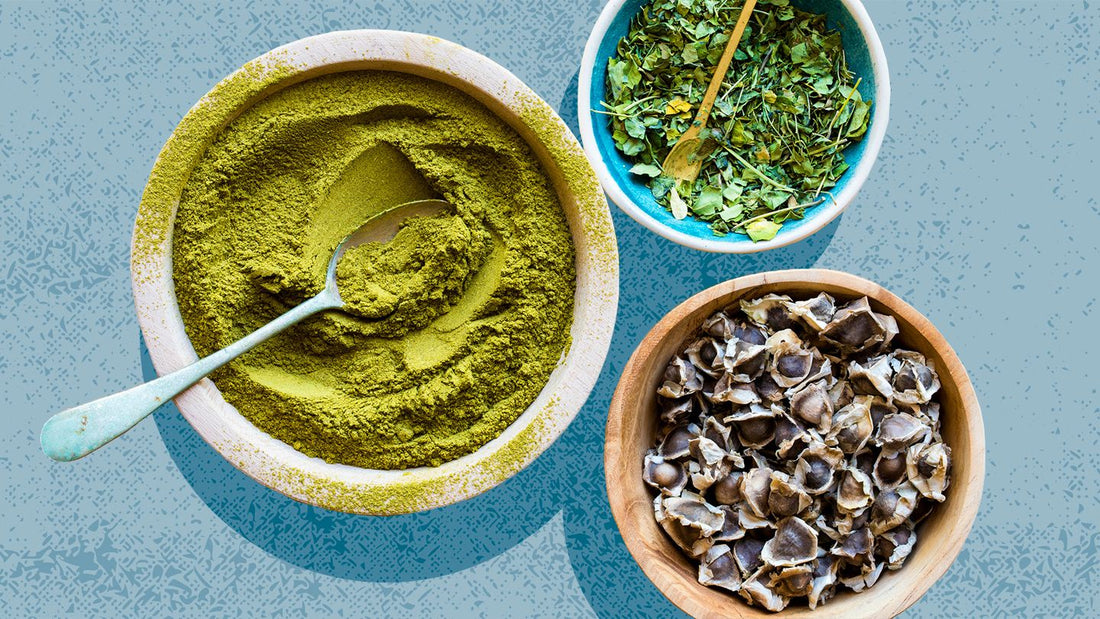Have you heard of the "Miracle Tree?" It's also known as Moringa Oleifera, and it's not just a nutritional powerhouse but also has huge potential as a medicinal plant. With its abundance of bioactive compounds, Moringa is becoming increasingly popular in the pharmaceutical research world, as it offers promising avenues for drug discovery and development. In this article, we delve into the exciting potential of Moringa in the pharmaceutical realm, highlighting its role in pioneering new treatments and contributing to the advancement of medical science. There's no denying that Moringa has a lot to offer in terms of its medicinal properties, and we can't wait to see what new discoveries it will bring to the forefront of public health.
Moringa's Bioactive Bounty: A Foundation for Pharmaceutical Innovation
Unpacking the Phytochemical Richness
Moringa, a plant native to the Indian subcontinent, is a nutritional powerhouse that has been used for centuries as a traditional remedy for various ailments. The leaves, seeds, and roots of the Moringa plant are packed with more than 90 essential nutrients, including vitamins, minerals, and amino acids. In addition, Moringa contains 46 types of antioxidants, which help to protect the body from harmful free radicals that can damage cells and contribute to chronic diseases.
What makes Moringa particularly interesting is its diverse compound profile. This plant contains a wide range of bioactive compounds, including isothiocyanates, flavonoids, phenolic acids, and saponins. These compounds exhibit various therapeutic properties, such as anti-inflammatory, antimicrobial, antioxidant, and anticancer activities, making Moringa a promising candidate for drug development.
For example, Moringa's isothiocyanates have been shown to have potent anti-inflammatory properties, which could make them useful for treating conditions such as arthritis and other inflammatory diseases. Similarly, Moringa's flavonoids and phenolic acids have been found to have strong antioxidant activity, which could help to protect the body from oxidative stress and reduce the risk of chronic diseases such as cancer and heart disease.
Overall, the diverse compound profile of Moringa and its key bioactive compounds make it a fascinating plant with great potential for pharmaceutical exploration.
Bridging Traditional Knowledge and Modern Medicine
Ethnopharmacological Insights
Historical Use: Moringa has been used in traditional medicine systems across the world for centuries, treating a wide range of ailments from diabetes and hypertension to inflammation and infectious diseases. These ethnopharmacological practices provide valuable insights for modern drug discovery.
Scientific Validation: Ongoing research aims to scientifically validate the traditional uses of Moringa, translating anecdotal evidence into clinically proven treatments.
Pioneering Drug Discovery and Development with Moringa
Targeting Chronic Diseases
Moringa, a plant native to India, has been subjected to various studies to explore its potential in developing antidiabetic medications. The extract of Moringa has shown effectiveness in naturally lowering blood glucose levels. The various active compounds in Moringa, such as quercetin and chlorogenic acid, are known to have antidiabetic properties. The research is ongoing to identify the mechanism of action of these compounds and to develop a more effective antidiabetic medication.
Cancer Therapeutics
Moringa's anticancer potential is being studied in-depth through its ability to induce apoptosis in cancer cells and inhibit tumor growth. The various bioactive compounds present in Moringa, such as niazimicin, have been found to be effective in inhibiting the growth of cancer cells. Additionally, Moringa's anti-inflammatory and antioxidant properties can help reduce the risk of cancer and enhance the effectiveness of chemotherapy. This research is a significant step towards developing a more holistic approach to cancer treatment.
Enhancing Drug Formulations
Moringa's polysaccharides have been studied for their potential as natural excipients in drug formulations. The polysaccharides have biocompatibility and non-toxic nature, which makes them suitable for use in drug delivery systems. The research has found that Moringa polysaccharides can improve the stability and bioavailability of medications by enhancing their solubility and preventing degradation. Additionally, the use of natural excipients in drug formulations can reduce the risk of side effects and improve patient compliance.
Phytochemical Synergy
The synergistic effects of Moringa's phytochemicals are being studied to enhance the efficacy of existing drugs and reduce their side effects. Moringa contains various bioactive compounds, such as flavonoids, alkaloids, and phenolic acids, which have therapeutic properties. The research has found that the combination of these compounds can enhance the effectiveness of existing drugs and reduce their side effects. The research is significant in developing more effective and holistic treatments for chronic diseases.
Overcoming Challenges in Moringa-Based Pharmaceutical Development
Ensuring Quality and Consistency
Standardization of Extracts: Developing standardized extraction processes is crucial to ensure the consistency, purity, and potency of Moringa-based pharmaceuticals, addressing variability in bioactive compound concentrations.
Clinical Trials: Rigorous clinical trials are essential to establish the safety, efficacy, and optimal dosages of Moringa-derived medications, bridging the gap between traditional use and scientific approval.
Navigating Regulatory Pathways
Regulatory Approval: Navigating the complex regulatory landscape is a significant challenge for bringing Moringa-based drugs to market, requiring comprehensive documentation of pharmacological benefits and potential risks.
Intellectual Property Issues: Protecting the intellectual property rights of Moringa-based discoveries while respecting traditional knowledge and ensuring equitable benefit-sharing poses ethical and legal considerations.
The Future of Moringa in Pharmaceutical Applications
Collaborative research efforts between academic institutions and pharmaceutical companies can be highly beneficial in advancing the development of Moringa-based medications. By leveraging multidisciplinary expertise, these partnerships can accelerate research and development processes, resulting in the creation of new and innovative treatments.
Moringa's potential in pharmaceuticals is vast and holds promise for advancing medical science, as well as addressing global health challenges. The plant's natural and accessible therapeutic options offer a solution for those in need of affordable and effective treatment options.
Additionally, academic-industry partnerships can help to bridge the gap between research and practical application by facilitating the translation of scientific findings into medical treatments. Ultimately, by fostering collaborations between these two entities, we can better understand the potential of Moringa as a powerful tool in the fight against disease.
Conclusion:
Moringa Oleifera's journey from a nutritional supplement to a source of pharmaceutical innovation exemplifies the untapped potential of natural remedies in modern medicine. As research continues to uncover the therapeutic benefits of Moringa's bioactive compounds, its role in drug discovery and development becomes increasingly significant. By bridging traditional knowledge with scientific validation, and overcoming the challenges of standardization and regulation, Moringa can contribute to the creation of novel treatments that are both effective and holistic. The future of pharmaceuticals may well be green, powered by the remarkable properties of the Miracle Tree.

